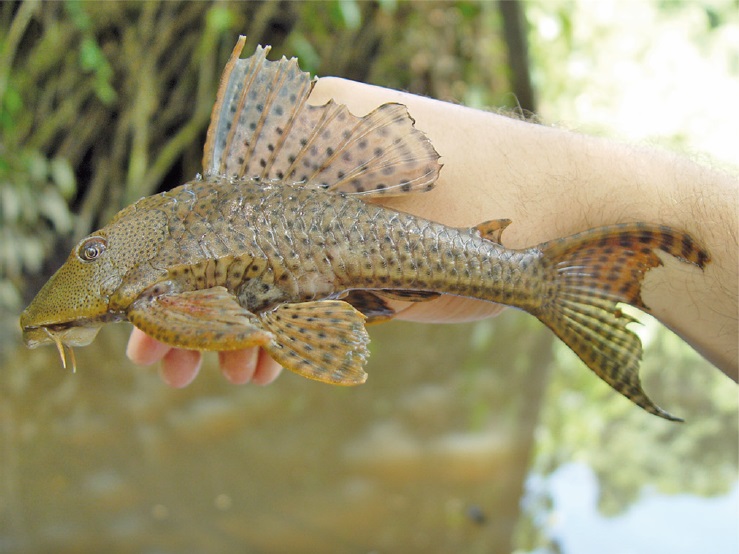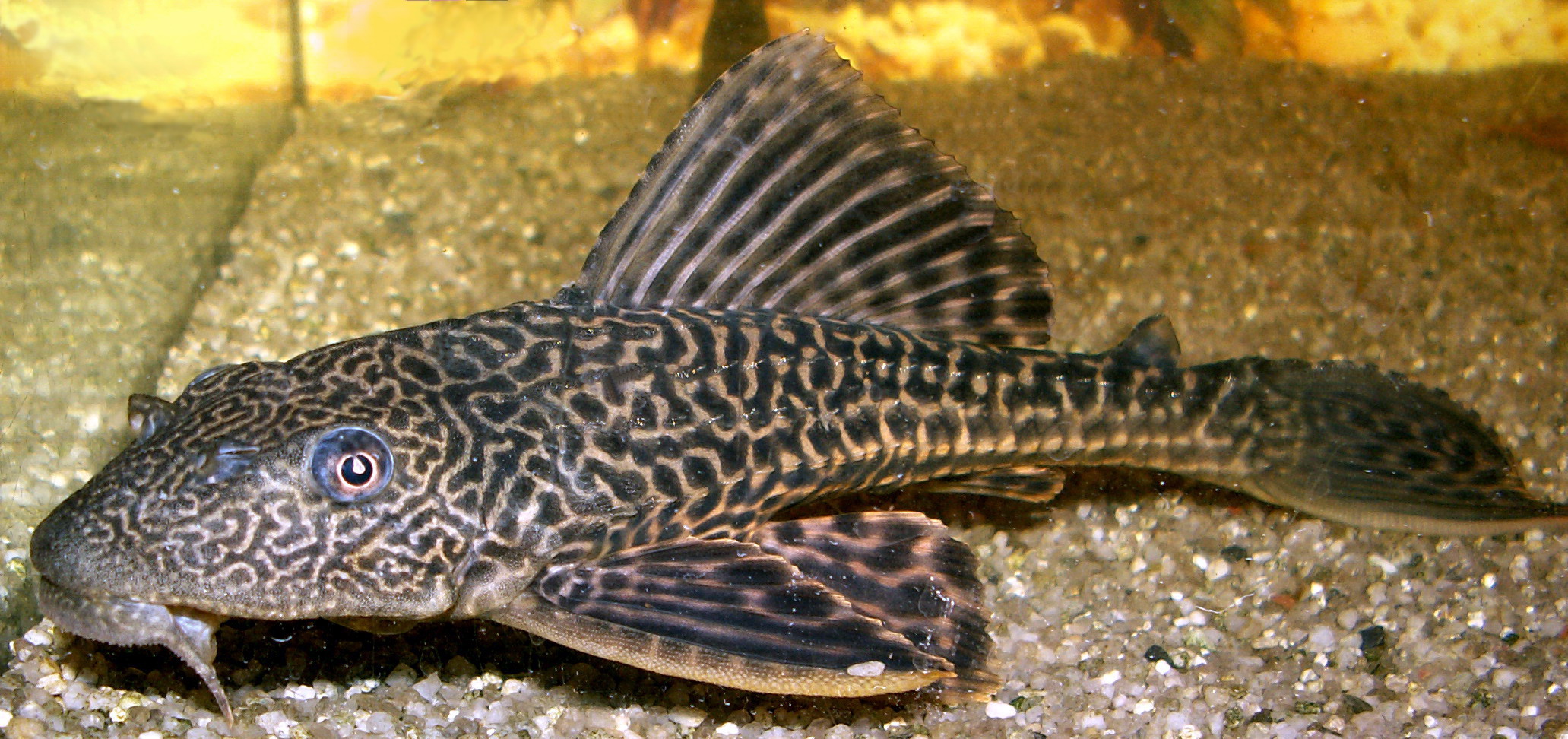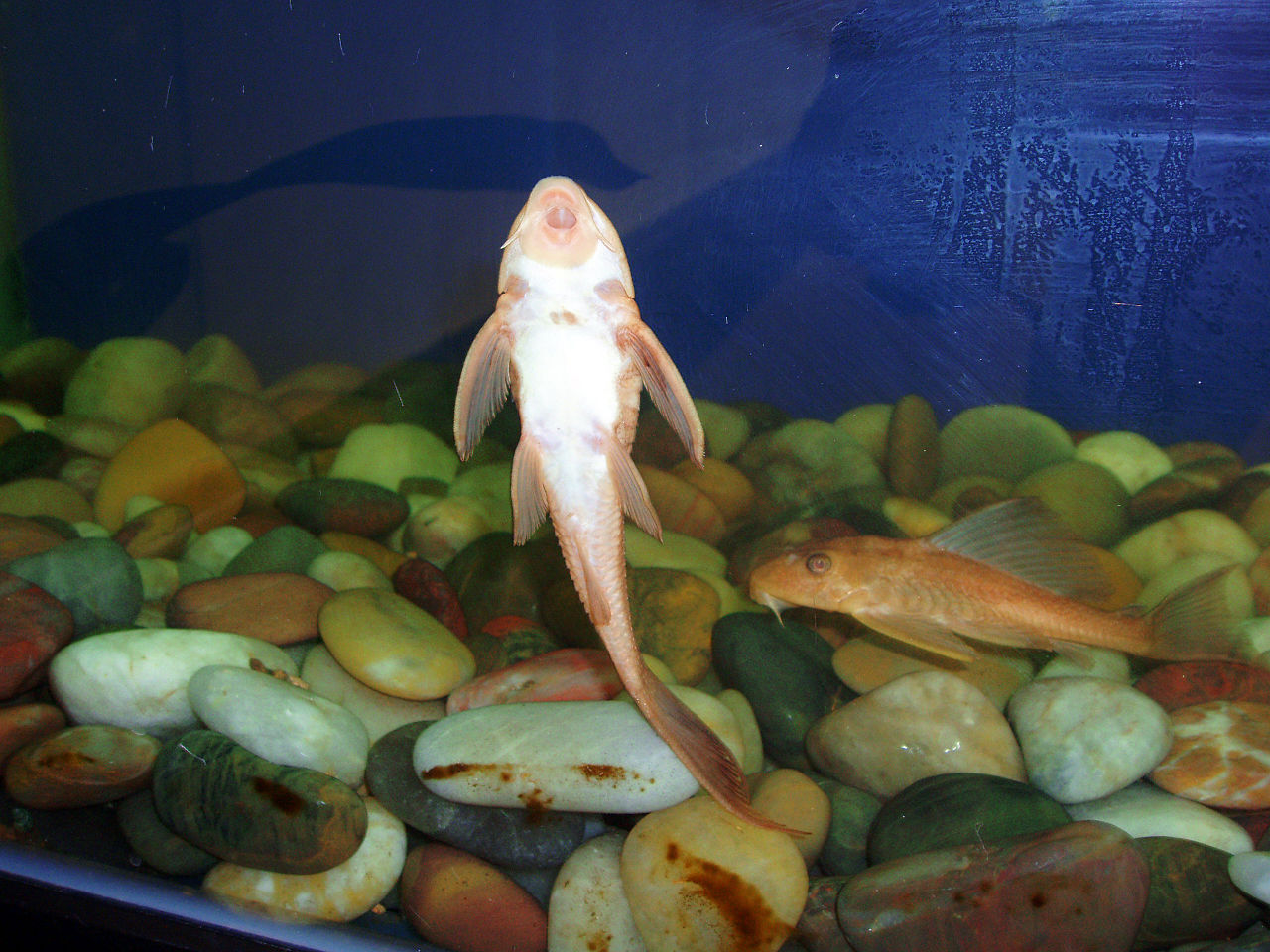Plecostomus, also known as pleco or suckermouth catfish, is a unique freshwater fish that’s become a mainstay in the aquarium hobby. If you’re considering adding a pleco to your tank, you’re choosing a fish renowned for its algae-eating habits. These fish belong to the family Loricariidae, which is notable for the armor-like scutes that shield their bodies. Plecos have adapted to latch onto surfaces with their sucker-shaped mouths, making them fascinating to watch as they diligently clean your tank.
Your pleco will be more than just a janitor for your aquarium; it will bring its own personality and characteristics to your aquatic community. These fish vary in size and appearance, with some species sporting intricate patterns and colors that make them standout additions. They don’t just contribute to a cleaner tank by eating algae and leftover food, but they can also become an interactive part of your underwater environment.
To keep your plecostomus happy, you’ll need to provide the right conditions in your tank. They require ample space to grow, adequate filtration, and a varied diet that goes beyond just algae. Understanding their needs is crucial, particularly since some species can grow quite large and may become more territorial as they mature. With the proper care and setup, a pleco can be a long-lived and rewarding companion in your aquarium.
| Common name: | Pleco: This is the go-to shorthand that rolls easily off the tongue, making it a favorite among aquarists. Plec: Just a tad shorter than “pleco,” for when you’re really in a rush. Algae Sucker/Eater: If you’ve noticed your tank glass getting cleaner without much effort on your part, you can thank your industrious pleco for its appetite for algae. Janitor Fish: Reflecting its role in keeping the aquarium tidy, this name highlights your pleco’s love for a clean home. Suckermouth Catfish: Yes, your pleco does have a distinctive mouth adapted for holding onto surfaces – and it puts it to good use! In some regions, the plecostomus may be known as the “pez diablo” or “devil fish,” but you know your friendly pleco is anything but devilish! This name probably comes from its horn-like fins and tenacious algae-eating habits. |
| Scientific name: | Hypostomus plecostomus: This name is traditionally assigned to the common pleco. The name Hypostomus plecostomus is often applied to several species, but true identification might require more attention to their physical characteristics. So next time you’re at an aquarium shop or researching online, look out for the scientific names to get accurate information about your pleco pals. |
| Care Difficulty: | Caring for your plecostomus can be a rewarding experience, as these friendly armored catfish make fascinating additions to your freshwater aquarium. Their care level is fairly easy. |
| Adult Size: | When you’re selecting a pleco fish for your aquarium, it’s crucial to consider their adult size to ensure they have ample room to thrive. Adult plecos exhibit a remarkable size range, with the small species measuring as modest as 2.5 to 4.3 inches. For instance, the bristlenose pleco typically grows to about 6 inches, making it a relatively manageable option for standard aquariums. In contrast, larger species of plecos can reach anywhere from 15 to 24 inches, such as the common pleco, known to outgrow many home aquariums. Bristlenose Pleco: ~6 inches Zebra Pleco: ~4 inches Common Pleco: Up to ~15 inches On the extreme end, certain pleco species, like the Pseudacanthicus major, can grow upwards of 30 inches, which would require a significantly larger tank and advanced filtration to support their size and water quality needs. |
| Original Origin: | The suckermouth catfish, or plecostomus, originates from Central and South America, where they thrive in various waterways. The environment they prefer includes: Freshwater rivers Fast-flowing streams Brackish water environments With their sturdy armor-like scutes, these catfish are well-suited to a range of habitats. In their home regions, you’d likely find the plecostomus navigating the currents skilfully, thanks to their aptly named suckermouth which helps them cling to surfaces. It’s this feature that also contributes to their ‘janitorial’ reputation in aquariums, as they help clean by feeding on unwanted algae. |
| Tank Size/Setup: | When setting up a tank, size matters. These friendly bottom-dwellers can vary in size depending on the species, so you’ll need to choose a tank that accommodates their adult size. For smaller Pleco species: Tank Size: Start with a 20-30 gallon tank. This provides enough room for swimming and hiding places. For larger Pleco species: Tank Size: Opt for a 75-125 gallon tank or larger. Common Plecos can grow up to 24 inches, requiring ample space to thrive. Setup Essentials: Filtration: Invest in a robust filtration system to maintain clean water since Plecos contribute to bioload. Hiding Spots: Include caves or PVC pipes for your Plecos to hide and feel secure. Substrate: Go for gravel or sand that won’t hurt their delicate bellies. Vegetation: Real or artificial plants can offer additional shelter. |
| Temperament / Compatibility: | When setting up your aquarium, considering the temperament and compatibility of your Pleco fish is essential. As youngsters, your Pleco will exhibit a shy nature, often hiding during the day. However, as they grow older, their temperament can shift, and some species may display more aggressive behaviors. In a community tank, it’s best to pair your Pleco with other peaceful fish to avoid any confrontations. Here’s a quick reference for compatibility: Juvenile Plecos: Generally compatible with other peaceful community fish. Adult Plecos: Larger and can become territorial—best kept with fish that won’t compete for bottom space. Ideal Tank Mates: – Small, non-aggressive fish – Mid to top dwellers that will not invade the Pleco’s preferred bottom space Possible Conflicts: – Other bottom dwellers – Smaller fish that might be seen as food with larger Plecos Keep in mind, your physical tank environment plays a crucial role in managing a Pleco’s temperament. Ensure there are plenty of hiding spots like caves or driftwood. Such features not only mimic their natural habitat but also offer sanctuary, which can help in keeping your Pleco peaceful. Compatibility is species-specific, and while most Plecos are peaceful, size and space will dictate the harmony in your tank. If you opt for one of the larger Pleco species, ensure your tank is spacious enough to accommodate their growth and reduce potential aggression due to territorial disputes. |
| Water Temperature: | When setting up your aquarium, it’s important to monitor and maintain the correct water temperature. Plecos thrive in warm water, and each species may have specific temperature needs. Here’s a quick guide to the preferred water temperatures for different types of plecos: Common Pleco (Pterygoplichthys): 72-86°F (22-30°C) Bristlenose Pleco (Ancistrus): 72-78°F (22-25.5°C) Zebra Pleco (Hypancistrus zebra): 82-88°F (28-31°C) Keep in mind that plecos, originating from warm South American river systems, require stability in their water temperature to remain healthy. Fluctuations can stress them out, leading to health issues. Warmer water holds less oxygen, so ensuring proper aeration is crucial. A good filtration system can help maintain oxygen levels, alongside stable temperatures conducive to your pleco’s health. |
| Water Hardness: | Paying attention to water hardness is crucial. As your pleco grows, it needs stable water conditions to thrive. Moderately hard water is ideal for plecostomus. To measure this, aquarists use degrees of General Hardness (dGH), which can also be expressed as parts per million (ppm). Your pleco will be happiest in water that ranges from: 5 to 15 dGH 90 to 268 ppm |
| Water pH: | Ideal pH Range: – Plecos flourish in a pH range that is slightly acidic to neutral. – You should aim for a pH between 6.5 to 7.5. |
| Fish Food: | They are primarily herbivorous, meaning they thrive best on a plant-based diet. However, these friendly bottom dwellers do appreciate an occasional meaty treat. Vegetables Plecos enjoy a good munch on vegetables. Make sure they’re prepared properly to aid in digestion: – Zucchini – Cucumber -Lettuce – Spinach – Kale – Broccoli Tip: Blanching or boiling the veggies makes them softer and easier for your pleco to eat. Commercial Foods These are specially formulated to meet your pleco’s dietary needs and are convenient to use: Wafer Foods: Contain a mix of vegetables and are fortified with vitamins and minerals. Repashy Gel Foods: Easy to spread on tank surfaces for natural grazing. Remember, foods like wafers sometimes come as blocks or sticks that dissolve slowly, offering a sustained food source. Meaty Treats Once in a while, your pleco can have Sliced Meat (in moderation). Always feed in small quantities and observe how quickly they consume the food. Ideally, they should finish within 2-3 minutes to avoid overfeeding and maintain tank cleanliness. |
| The Sexes: | Here are some pointers that might help you distinguish between the sexes: Size: Typically, females are larger than males. Body Shape: Males may present a more streamlined shape, while females generally have a thicker body profile. It’s worth noting their behavior as well: Territorialism: Males often exhibit more aggressive and territorial behavior. This can be more pronounced during breeding seasons. Despite these general guidelines, keep in mind that variations can occur based on the species of pleco. Some may not show these differences as distinctly as others, making sex determination a little more complex. |
| Breeding : | If breeding is an interest of yours, it’s worth noting that breeding plecos is typically an endeavor for professionals with specialized equipment and tanks. For casual aquarists, breeding may not be a viable option. To breed successfully though, you’ll need to create an environment that mimics their natural habitat. Tank Conditions: Ensure your tank is at least 30 gallons, with up to 100 gallons or more for adult plecos and additional plecos. The water type should be moderately hard, and fresh, with a temperature ranging from 77-78°F. Use gravel, pebbles, or clay as a substrate for their comfort. pH Levels: Maintain water pH between 6.5 and 7.5. Water Quality: Perform routine maintenance and water changes to keep water in prime condition. Diet: A well-fed pleco is more likely to breed. Provide them with a varied diet, including both plant-based and protein-rich foods. Male to Female Ratio: 1:2 or 1:3 Male Pleco Role: Males take an active role in breeding by not leaving the eggs alone. Ensure the males are well-fed before the process. |
| Average Lifespan: | When you bring a Plecostomus into your home aquarium, you’re embarking on a potentially long-term commitment. The lifespan of your Plecostomus greatly depends on the species and the care you provide. On average, you can expect your pleco to be part of your aquatic family for generally 10 to 15 years. Some species, however, have been known to live for up to 20 years in captivity under optimal conditions. |
| Comment: | They serve as efficient algae-eaters and contribute to a cleaner tank environment. With over 500 species, there’s a pleco suitable for nearly every type of freshwater aquarium. Plecos are not only interesting to watch, with their unique scavenging behavior, but also attractive in their own right. They add to the dynamics of your tank’s ecosystem and can be a joy to care for. |






Leave a Reply